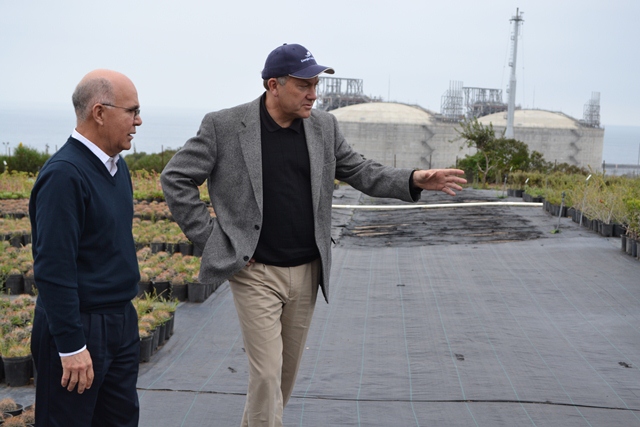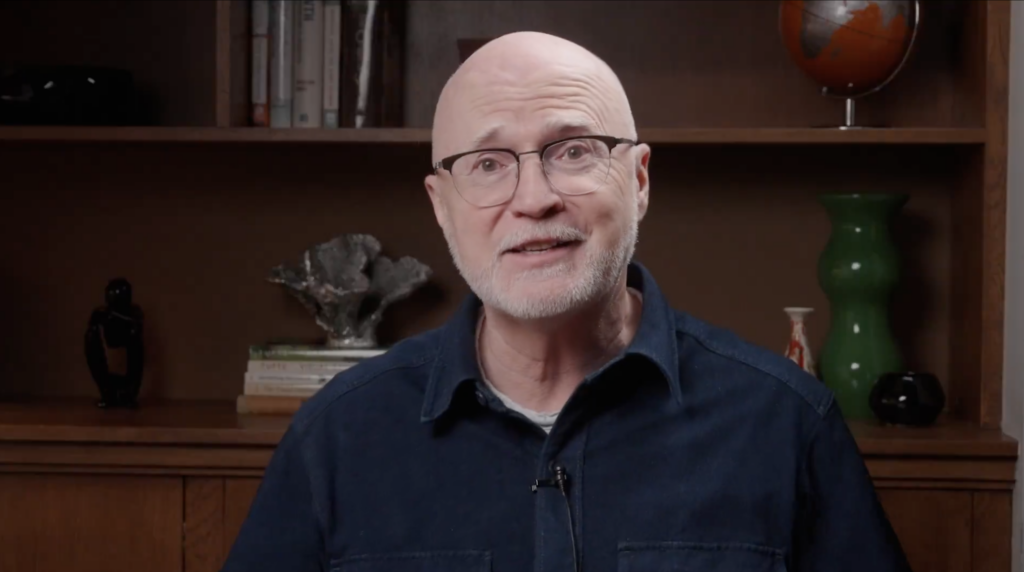By Steve Horn and Martha Pskowski
The Costa Azul liquefied natural gas (LNG) import terminal sits on an isolated stretch of the Pacific Coast north of Ensenada, Baja California, in Mexico. When Sempra and its Mexican affiliate IEnova sought to acquire the land in 2002, the site’s remoteness worked in their favor. It was only frequented by fishermen, a few surfers, and a handful of beach-front property owners.
“That was the last stretch of coastline between Tijuana and Ensenada that was pristine and undeveloped,” Bill Powers, a San Diego-based energy engineer and founder of the Border Power Plant Working Group, told DeSmog. “There was just a little fishing village.”
After breaking ground in 2005, the Costa Azul LNG plant opened in 2008. Despite Sempra’s messaging strategy that the U.S. was running out of gas, the terminal has imported limited amounts of natural gas since. Now, San Diego-based Sempra hopes to build an LNG export facility at the same site.
With the demise of the proposed Coos Bay, Oregon-based Jordan Cove LNG terminal in December 2016, industry attention has shifted south of the border to Mexico’s Baja California. Natural gas obtained from hydraulic fracturing (“fracking”) has a home for exports on two of the three coasts in the U.S. — the other two being the Gulf Coast and the Atlantic Coast — but Costa Azul would be the first LNG export terminal that U.S. companies could access on the Pacific Coast.
A diverse mix of environmental groups, local landowners, and surfers opposed the construction of Costa Azul over a decade ago. Since then and in the aftermath of Mexico’s 2013 reforms to privatize its energy system, Sempra and other pipeline companies — such as TransCanada, best known for its proposed Keystone XL pipeline — have invested in pipeline assets set to ship that gas to the global market via Costa Azul.
With Jordan Cove now back on the table under President Donald Trump, the opposition movement to Jordan Cove has generated myriad news headlines. But the existence of Energía Costa Azul — let alone the resistance movement against pipelines connecting to it — has flown comparatively under the radar, particularly in the U.S.-based English-language press.
Sempra spokeswoman Paty Ortega Mitchell told DeSmog that Costa Azul could serve as an express valve, of sorts, to Asian markets for LNG exports.
“We are currently evaluating gas supply opportunities and all options are being explored,” said Ortega Mitchell. “Given its existing developed regasification facilities, tanks and jetty, plus the Pacific Coast location, [Costa Azul] is geographically positioned to cost-competitively serve Asian LNG customers who value the environmental attributes of natural gas to meet their energy needs, direct access to the Pacific basin and diversification from other LNG suppliers.”
Sempra, too, may dodge an existing bullet which exists for other U.S.-based LNG exporters.
Much of the gas is slated to go to China via the newly expanded Panama Canal. But because of the ongoing trade war between the U.S. and China prompted by President Trump, China has slapped a 25 percent tariff on LNG imports coming from the U.S. Shipping the gas from Mexico, however, may provide a safe haven that those shipping from the Gulf of Mexico or the eastern seaboard in the U.S. do not have.
The plans for an export facility are just the latest instance of U.S.-based energy companies taking advantage of Mexico’s lenient regulatory system and permitting process.
“Sempra is in Mexico only because the environmental regulations are not as strict, the labor cost is cheaper, and they can get their permits fast,” Powers said.
‘Companies Started Leaving’
A diverse coalition of environmentalists, residents, and surfers tried to prevent Costa Azul’s construction as an LNG import terminal about a decade and a half ago.
Nonetheless, the project was fast-tracked through the permitting process in Mexico. Once it was constructed, stories of Sempra’s collusion with Mexican authorities began trickling out. The complicated history of the only LNG plant in Baja California raises questions about its expansion as an export facility.
“Sempra has never used Costa Azul to bring in much natural gas; it was just a bad business decision,” Powers said. “And I think it will be another bad business decision if they go forward with the export facility.”
An April 2018 report published by the Inter-American Dialogue, a think tank consisting of high-ranking leaders and policy elites from across North and South America, appears to bolster Powers’ statement about lack of natural gas reaching the Costa Azul LNG import terminal.
“The Costa Azul terminal located in Baja California receives only small, sporadic shipments as local power plants are normally supplied via pipeline from the United States,” the report, one of whose authors is a U.S. Department of Energy analyst named Alex Wood, explains.”The underutilization of the Costa Azul terminal has led its owner, Sempra Energy, to consider reconfiguring the terminal as a liquefaction plant to export natural gas sourced from the United States.”
Costa Azul was one of seven LNG sites that companies like Sempra, Chevron Texaco, and Shell proposed in the early 2000s in Baja California. Around the same time, a wave of new power plants and transmission lines were in the works around the border city of Mexicali to supply the U.S. market. Powers and Carla García Zendejas, an environmental lawyer from Tijuana, founded Border Power Plant Working Group to organize against fossil fuel projects in the border region.
Greenpeace Mexico and an Ensenada-based environmental organization el Grupo de Ecología y Conservación de las Islas were among the coalition partners opposing Costa Azul, along with the Border Working Group. In 2005, they hosted a forum in Tijuana, which included activists from Indonesia, where energy companies were planning to import gas from the Baja coast.
Roberto Valdés, the developer of a nearby golf course and tourist community, Bajamar, was also an important opponent of Costa Azul. Most residents of Bajamar were Americans who purchased homes in Baja California, and the LNG terminal would disturb the otherwise peaceful environment.
Another ally in the movement against Costa Azul was the Southern California surfer community. Brothers and surfers Rusty and Greg Long had found a world-class wave they dubbed “Harry’s” at a remote site north of Ensenada. They learned in 2003 that the location was slated for the Costa Azul natural gas terminal. They enlisted the support of the non-profits Save the Waves and Wildcoast to protect the waterfront.
Gradually plans for the other LNG terminals in places like Tijuana were canceled after local protests.
“Some of the companies started leaving because they thought it would be easier to build in Mexico, and it wasn’t,” Carla García Zendejas, director of the Land, People, and Resources Program at the Center for International Environmental Law, said.
García Zendejas explains that organizers succeeded in pressuring the Mexican environmental authorities to hold a public hearing to receive comments on the project, a right by Mexican law. She says it was the first such hearing in Baja California. But the environmental authorities did not consider the well-researched statements, and Sempra’s proposal for Costa Azul kept moving forward.
“It was clear that Semarnat [the Environment and Natural Resources Ministry] was not obliged to take the statements into account, because the way the law is written,” García Zendejas said. “So they granted the permit.”
This regulatory streamlining is characteristic of U.S. energy companies working in Mexico, Powers told DeSmog.
“They look at Mexico as the Wild Wild South,” Powers stated. “You’re not subject to as much scrutiny, you’re not subject to the same standards. And yet due to liberalization of the border, they get access to the U.S. market as if they were meeting all U.S. standards even if they aren’t.”
Construction began in 2005. The fishermen were evicted, along with other nearby residents. A break wall and jetty were constructed, destroying the Harry’s wave forever.
Fight Begins Anew, State Department Monitors
But even after Costa Azul opened for LNG import in 2008, the fight wasn’t over. Ramon Eugenio Sánchez Ritchie, a wealthy landowner whose property adjoined Costa Azul, filed a lawsuit in 2010.
According to Ritchie’s complaint reviewed by DeSmog, Ritchie alleges that Sempra seized and stole 600 acres of his land to clear the way for Costa Azul, while also bulldozing his home in the process. The case, filed in civil court in the U.S. District for the Southern District of California, sought damages from Sempra for its deeds.
Sempra, the complaint details, formulated an accusation that Ritchie was living in the house as an illegal squatter in defiance of Mexico’s criminal law system. Sempra got the help of then-Lieutenant Governor Bernardo Martinez Aguirre and the Attorney General of Baja California in lodging the criminal complaint, Ritchie’s civil complaint alleges. The company also bribed the police $16,000, the complaint further alleges, to carry out the raid of Ritchie’s home.
“Not only was the bulldozing of Plaintiff’s ranch house swift and complete, but there was the establishment of a 50-person armed guard force on the property” and a “contract [existed] to build an exorbitantly priced $1 million perimeter fence,” the complaint further alleges.
As the case wove its way through District Court motions, hearings, and other procedural wranglings, the then-Deputy Assistant Secretary in the Bureau of Western Hemisphere Affairs for the U.S. State Department Matthew Rooney responded to questions submitted for the record in 2012 by U.S. Sen. Bob Menendez (D-NJ) about U.S.-Mexico relations, one of them centering around the Costa Azul facility. Menendez stated in the premise of his question that the State Department was working with Sempra to ensure the project went through.
Rooney’s answer to Menendez’s question focused on the then-ongoing Ritchie lawsuit.
“Individuals purporting to represent local landowners have enlisted the support of state and local officials in Baja California, including the Mayor of Ensenada, in advancing allegations that the plant violated land acquisition and environmental rules and that it is improperly sited,” reads the response to the question by Rooney. “At that time, then-U.S. Ambassador to Mexico, Carlos Pascual, contacted then-Mexican Secretary of Government, Francisco Blake Mora, on this issue and federal and state authorities intervened to stop potentially dangerous disruptions to the terminal’s operations.”
At the time, Rooney said the State Department had yet to directly intervene in the situation on behalf of Sempra. But he did say that “we stand ready to be helpful as requested” and that then-U.S. Ambassador to Mexico Earl Wayne had recently met with Sempra’s CEO on the matter. Rooney said he could not provide a comment for this story and a spokesperson for Wayne also said he could not respond to a request for comment.
Former U.S. Ambassador to Mexico Earl Wayne. Credit: U.S. Department of State, public domain
Pascual, as previously reported by DeSmog, was instrumental in pushing energy privatization in Mexico under the State Department then run by U.S. Secretary of State Hillary Clinton.
Ritchie would go on to lose that case five years later in 2015, with U.S. District Court Judge Cathy Ann Bencivengo ruling against him in a Summary Judgment, before the case could proceed to a trial-by-jury. Judge Bencivengo ruled that there was no direct evidence that Sempra was behind the deeds itself as a company and that, citing the 1998 U.S. Supreme Court case United States v. Bestfoods, deeds done by subsidiaries of the company should not be held legally against the parent company.
The case did not end there, however, and moved to the U.S. Court of Appeals for the Ninth Circuit, with the initial appeal lodged on May 11, 2016.
Then, in July 2017, the Court of Appeals affirmed the District Court’s ruling, agreeing with the Court on all but one issue, that of the issue of conversion (better known to most people as stealing or theft). On the issue of conversion alone, Ritchie’s case was sent back down to the U.S. District Court for the Southern District of California. But, the case was dismissed almost immediately in September 2017 by Judge Bencivengo, who ruled that Ritchie had long since passed the legally mandated three-year statute of limitations.
Legal accountability did not happen in Ritchie’s case, and so Sempra has continued to push through projects in the Baja California region into the present day.
“Sempra is very smart politically and for years they would have at least one board member from Mexico who is a power broker,” says Bill Powers. Luis Téllez Kuenzler is one.
The former president of the Mexican Stock Exchange was also a Sempra board member while the company was spearheading projects in Mexico. It was later found that Téllez kept information from bond-holders in IEnova, Sempra’s Mexico affiliate, about lawsuits against the company.
TransCanada Connector
Pipeline suitors aiming to connect their lines to Energía Costa Azul see it as a potential express valve from the Permian Basin fracking field in West Texas and other shale fields in the western U.S., and as a means to clear out the glut of gas which will be contained in the planned gas pipeline system in Baja California.
The most recently proposed pipeline has come from the company Magnum Development, coining it the WEST (Western Energy Storage and Transportation) Header Project. Heading west, as the pipeline’s name suggests, gas would be shipped from Salt Lake City, Utah, westward and southward all the way to the Energía Costa Azul site on the Pacific Coast, according to a map published online by the company.
In a June 28 company press release announcing the project, Magnum explained the ins and outs of the proposal.
“The proposed WEST Header Project will provide access to prolific natural gas supplies at or near the Opal Hub in Wyoming, Goshen Hub near Salt Lake City, Utah, and Permian Basin supplies flowing westbound to locations at or near Ehrenberg, Arizona,” detailed the release. “The WEST Header Project anticipates allowing for receipts/deliveries directly into … potential international exports to Mexico at Yuma, Arizona, and West Coast LNG exports, including via Energia Costa Azul near Ensenada, Baja California, Mexico.”
Magnum has opened what’s known in industry lingo as an “open season” process, which calls for potential companies interested in shipping their product through the pipeline to contact the company with interest, closing on August 31.
Costa Azul is also connected to TransCanada’s North Baja Pipeline via Sempra’s Gasoducto Rosarito pipeline. North Baja runs from Ehrenberg, Arizona, to Ogilby, California, where it then connects with Gasoducto Rosarito, which in turn flows westward toward Costa Azul.
A blow to Sempra’s plans came on June 21, when the Public Utilities Commission of the State of California denied the company’s affiliate’s request for a Certificate of Public Convenience and Necessity to build a pipeline to supply the terminal. To begin to export LNG at Costa Azul, Sempra will have to convince investors of the facility’s viability and secure adequate gas supply for export.
Environmental Costs
While the entire supply chain for fracking for natural gas has a well-documented and potent greenhouse gas footprint, including for LNG exports, Costa Azul has its own unique set of environmental costs and consequences. The terminal is located along the Pacific Coast of Baja California, an area of ecological importance and increasing pressures.
Rusty Long was quoted in Surfer magazine describing the area shortly before the construction of Costa Azul: “Schools of yellowfin, dolphin, whales. Crystal-clear water. Kelp in the bay. I’d never seen so much marine life before. It was a sanctuary.”
Additional concerns were raised in February 2017, when Mexican environmental authorities held a public hearing with parties affected by Sempra’s proposed LNG export facility.
Coastal residents and environmentalists in attendance brought up that there is no emergency plan in place at Costa Azul. They also complained that they were informed of the meeting just a month ahead of time, which provided little time to review the environmental impact assessment (EIA), which was over 1,000 pages. Gustavo Alanís of the Mexican non-profit Mexican Center for Environmental Law (CEMDA) laid out problems with the EIA. Representatives of the Bajamar development also spoke at the hearing.
Despite the misgivings expressed at the hearing, the Mexican authorities granted Sempra the necessary permits to export LNG in December 2017.
García Zendejas, the environmental lawyer, says that sub-par EIAs are common in Mexico. She says the situation has only gotten worse since the 2013 energy reforms, which prompted a push for international oil and gas companies to enter the Mexican energy market.
“The energy reform allows for a lot of expropriation, a lot of changes in land use,” she said. “The protections that Mexican people had before to defend their land are much more at risk with the energy reform.”
Bill Powers believes Costa Azul will do little to benefit the U.S. or Mexico. He points out that 15 years ago, Sempra falsely argued that the U.S. was running out of natural gas. Now, it’s the opposite: Sempra wants the U.S. market to export a glut of natural gas from the U.S. through Mexico and to the global market. He says neither the U.S. nor Mexico would benefit from the LNG export terminal.
“This has nothing to do with the energy security of the U.S.,” Powers said. “It has everything to do with corporations degrading the environmental quality of communities and the communities themselves. All of it is just so the corporation can make a buck.”
Main image: U.S. Consulate General in Tijuana Andrew S. E. Erickson visited the Costa Azul terminal in Ensenada in March 2013. Credit: Consulate General of the United States in Tijuana
Subscribe to our newsletter
Stay up to date with DeSmog news and alerts








